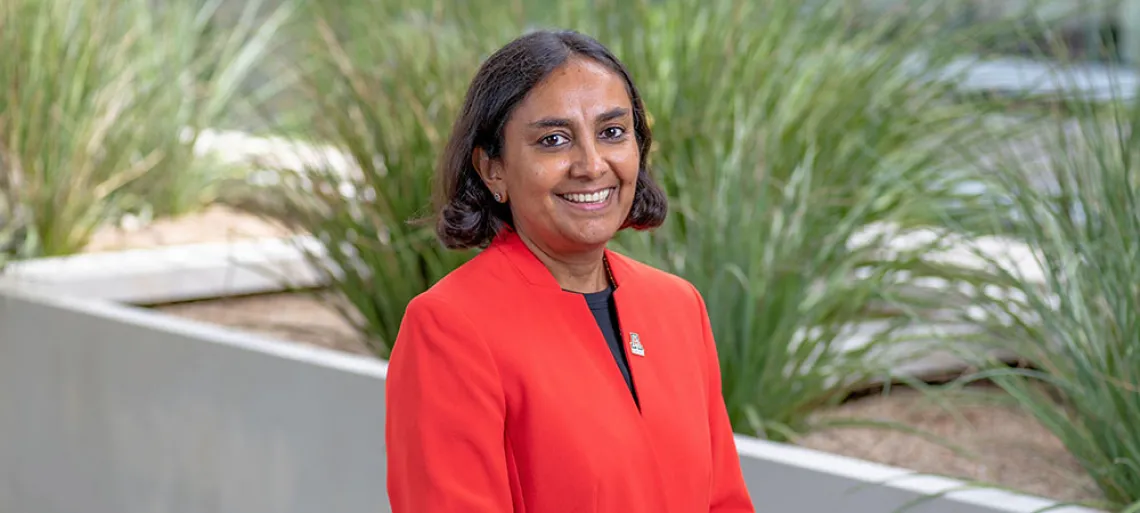New App Could Change the Way We Track COVID-19

The University of Arizona is at the forefront of universities and research centers that are working towards improving how we test, trace and treat COVID-19. For example, Sudha Ram, professor of management information systems in the Eller College of Management, is well into an intense phase of researching and developing of a variety of new digital mechanisms and tools that could help trace the spread of COVID-19 for students, staff and faculty at Arizona.
Ram joined the Eller College of Management in 1985 after earning her PhD in Management Information Systems from the University of Illinois at Urbana-Champaign. She directs the INSITE Center for Business Intelligence and Analytics and her areas of expertise include, big data analytics, machine learning, network science and business intelligence.
Ram and her team of collaborators from the College of Public Health have been working tirelessly over the past few months on comprehensively evaluating a Bluetooth-enabled app that will digitally trace contact that users have had with people around campus. Users will be able to voluntarily download the app to their smartphones in a way that preserves their privacy. If an app user experiences symptoms of COVID-19 or tests positive for the virus, they can choose to enter it into the system. A public health representative will then be able to contact them to walk through where they have been in the last few days. The app will also send a message, with the infected person’s permission, to all people they have been in contact with—who also use the app—so that they are aware and can get tested or self-quarantine. All of this will be done in way that preserves privacy and does not reveal any individual’s identity.
Ram along with collaborator Jeremy Frumkin, executive director of research technologies for University Information Technology Services, is also leading a team that will develop a web-based system using anonymized Wi-Fi logs to understand real time movement and traffic patterns on campus. It will help analyze person-density in buildings and spaces at Arizona, in real-time, and use computational models to support both institutional and individual decision making. Using spatial and temporal data, the University will be able to determine for example, which classes should be moved online, how often classes should meet and which spaces need to be managed appropriately to alleviate congestion. The analysis can also be used to help people recall their individual daily movements in order to more accurately describe who they may have come in contact with to enhance manual contact tracing efforts
These applications are in the development phase, with hopes to launch in the fall when students return to campus. “Right now our project is focused on the University of Arizona,” says Ram. “But we are talking with Arizona State University and Northern Arizona University, as well as the county and state officials for possible future deployment of the app.”

